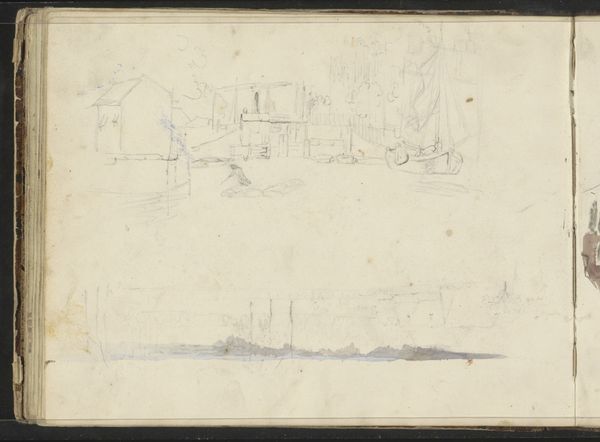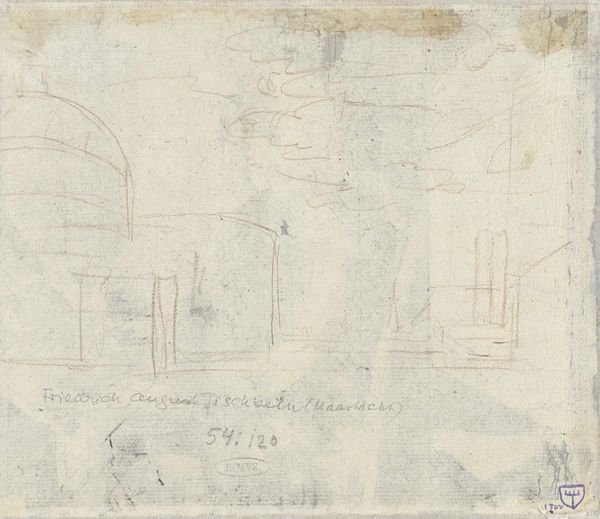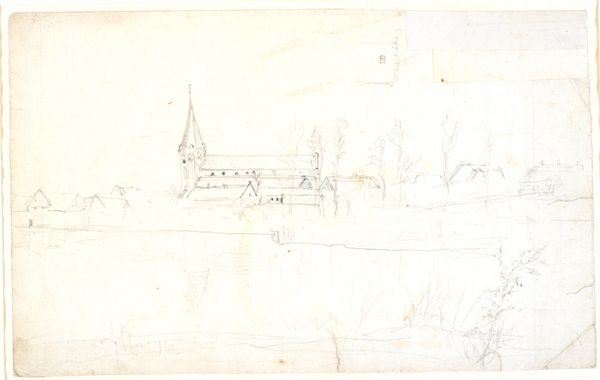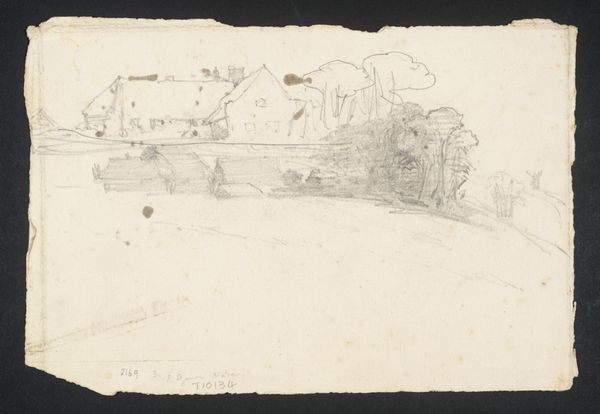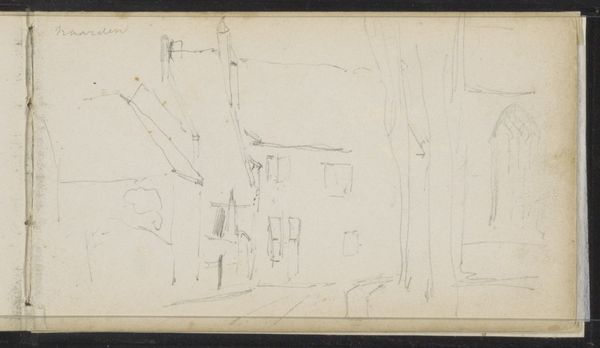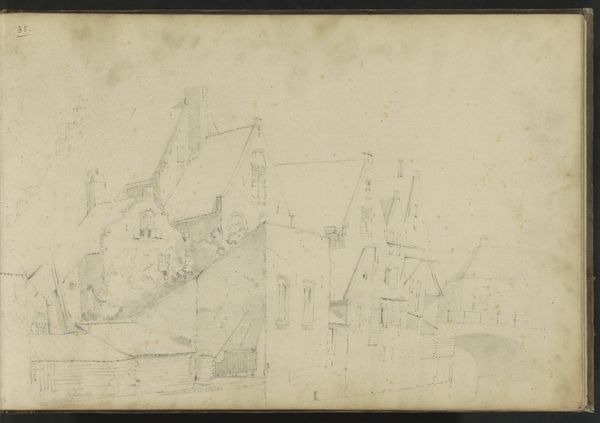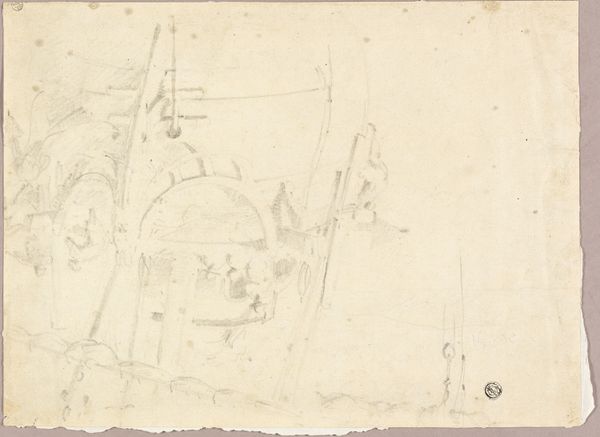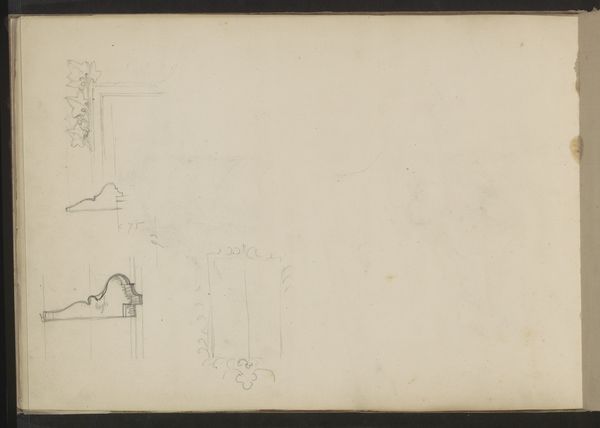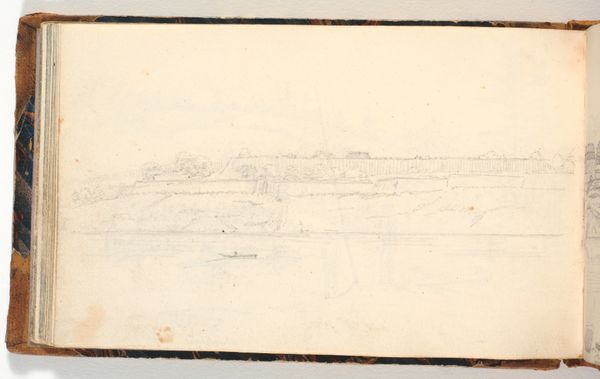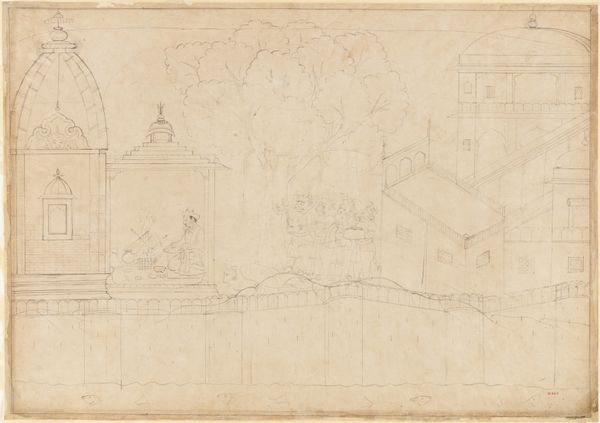
drawing, pencil
#
drawing
#
dutch-golden-age
#
landscape
#
pencil
#
cityscape
Dimensions: height 178 mm, width 307 mm
Copyright: Rijks Museum: Open Domain
Curator: Welcome. Here we have Anthonie Waterloo's pencil drawing, "Vispoort te Harderwijk met de oude stadswallen," likely created sometime between 1619 and 1690. What are your first impressions? Editor: My initial thought is melancholy. The thin, grey pencil lines create a hazy, dreamlike image. There is a certain fragility. The scene depicts fortifications, yet they feel somehow vulnerable, rather than imposing. Curator: I see that vulnerability in the materiality of the work. The softness of the pencil lines allows for an exploration of tonal variations; the lack of crisp lines suggests an emphasis on capturing the atmospheric effect, rather than exact architectural detail. Editor: That atmospheric effect speaks volumes about Dutch society at the time. Fortifications represent both power and defense, but within the context of the Dutch Golden Age, there’s an interplay between prosperity and the ever-present threat of invasion. The Dutch Republic, though thriving economically, was still vulnerable to outside forces. Curator: True. The artist's use of line creates spatial recession—leading the eye towards a hazy horizon, where solid forms begin to dissolve. This aligns perfectly with landscape conventions during that period, which served less as accurate records and more as crafted aesthetic experiences. The linear perspective offers a structured vista, but the indistinct quality implies a certain instability, a temporal, rather than permanent view. Editor: And that tension plays out across the whole of Dutch society, doesn't it? The rigid social hierarchies alongside a burgeoning merchant class and constant religious conflicts created inherent social instability. A drawing like this, ostensibly depicting a cityscape, captures this underlying social anxiety and ambiguity so characteristic of its time. Curator: I agree that seeing the social undercurrents definitely enhances one’s appreciation of the formal devices employed by Waterloo. It highlights how these subtle stylistic choices speak to the complex history. Editor: Absolutely. When art is considered within its socio-political context, those stylistic choices offer so much insight into the lives of both artists and their audience. Curator: An enriching perspective to consider while appreciating the structure and execution of the artist. Editor: Agreed.
Comments
No comments
Be the first to comment and join the conversation on the ultimate creative platform.
